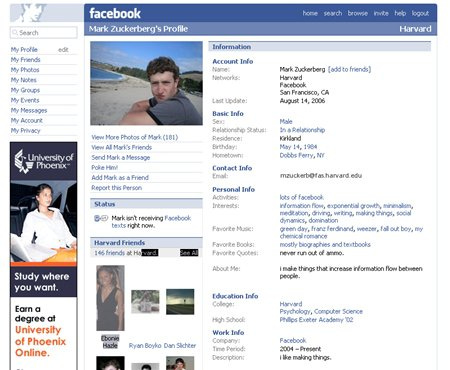Forget Passion, Focus on Surfing
Don’t rely on your passions — instead, look further out to identify big waves to surf
I joined Facebook as a rotational product manager 18 months ago, straight out of university. My journey of getting there was windy and far from planned.
This is why I didn’t know how to answer the question I got during onboarding:
What type of team do you want to work on?
Up until this point, I had always gone with my gut. I didn’t look far ahead and definitely didn’t have a framework for choosing my next role.
So I defaulted to a list of teams based on the only criteria I knew at the time: my passions. Here’s the email I sent:
The last passion (Life Events/Moments) led to my first role as a Product Manager on the Facebook Profile team. I would be responsible for building features to help users communicate a transition in life.
The team was awesome, and the area was something I was passionate about. But I realized something: profile was a mature area.
I think of maturity as how well-defined an area is. Back in 2005, profiles were the entire Facebook experience! The decisions around its key information (ex. showing your real name) had been made, and every person on Facebook has a profile by default. There are few unknowns in this area.
There’s value to working in mature areas - this includes expertise from people who have seen the entire growth trajectory, a high user base and a well-known brand.
But in the last 18 months, I’ve learned that it’s always better to work in a growing area early in your career. Here’s why:
Learnings: There’s always more to do than people to do them when a team is growing. This forces team members to do new things that aren’t in their job description but are crucial for growth. You’ll also learn how to build a business from the ground up (in case you ever want to do that yourself, like I want to 😇).
Creativity: The norms are not established. This gives you the ability to shape the standards rather than inheriting decisions/processes from years ago.
Exit opportunities: Being a part of a growth story increases your pool of great options at the end. If you joined Google in 2004 when they just IPO'd, your profile, skills and wealth would be much higher today than had you joined Yahoo at the same time.
Growing Teammates: Teams that are growing attract people who are also in a growth stage of life. They are hungry to learn and still have many decades in their career for experimenting and building things. These people may be future co-founders, employers or investors!
To identify growing areas, it’s helpful first to understand existing wisdom on the stages of maturity.
The 4 Stages of Maturity
Remember when the iPhone came out? It was 2007, and initial media coverage didn't understand what it was. Microsoft's CEO even laughed at the idea, saying no one wanted to pay $500 for a phone. Oh boy, were they wrong.
The history of the iPhone is an excellent example of the four stages of product maturity. This is a framework that helps pinpoint the future trends surrounding a product (or, as you’ll see, a career area).
The four phases are:
Introduction: In the early days, only enthusiasts and first-adopters try the product. The creators double down on building the product that many more people will want to use. (iPhone 2007-2010).
Growth: People can't get enough of the product. More and more people keep buying it, and the user base grows exponentially in a few years (iPhone 2010-2015).
Maturity: Many people use the product. It now needs to retain these users, focus on maintenance and enter new areas (iPhone 2015-Present).
Decline: People stop using the product and switch to better, newer products that serve their needs better (iPhone 2022, maybe).
It's helpful to visualize these phases across a curve:
The stages of product maturity can apply to many things, including companies (ex. Facebook), teams (ex. Profile) and areas (ex. AI). If you had to decide on the next company you want to work at, it might help map out ones you’re interested in across a maturity curve.
Let’s say you’re interested in the auto industry. This may be a curve you draw:
Question for you: would you rather join Tesla or Ford today?
I’d go for Tesla because it gives you the advantages of learning, creativity, exit opportunities and growing teammates we discussed above.
Two important notes
The borders between stages are subjective. For example, I think that the iPhone is still mature, while many people probably think it’s declining. This subjectivity creates opportunity. Investing in something non-obvious, either with money or working in an area, can be a life-changing decision.
The introduction stage also has opportunities. But these are the high-risk, high reward areas. They may strike gold, or they may fizzle out. If your risk tolerance and confidence are high, teams at the introduction stage are excellent places to learn.
Chase Big Waves
In university, I interviewed Ryan Holmes, Founder and CEO of Hootsuite. I asked him for his advice for people who wanted to start businesses.
He said,
Find a big wave. It's simple, but to use a surfing analogy, you can be a great surfer with no wave, and you won't get anywhere. Given a great wave, even average surfers can get carried along.
This advice is dead on for those of us trying to grow our careers.
A wave is an upcoming trend. Some may be hype alone (see Bitcoin in 2016), some may be based on fundamental changes in the world (see Zoom in 2020). The further out you can see a wave, the longer you’ll have to surf it.
How do you spot a great wave?
Here are three ways to identify waves at different levels:
Analyzing an industry: an inflow of investment.
Where is money flowing? Look at where venture capitalists and institutional investors spent in 2020 and where they will spend in 2021. When comparing companies in the same industry, use Crunchbase to see the money they’ve each raised and from which investors.
Some upcoming waves (in my opinion) are in healthcare, biotech, autonomous vehicles, augmented reality, and quantum computing.
Analyzing a company: superstar leaders.
Great leaders can drastically improve the trajectory of a company or team. They are also pro surfers and will only enter an area if they see significant room for growth. If an unknown company or team hires a heavy hitter, pay attention — they know something that you don’t.
Twitter has been the best way for me to stay up to date here. Follow superstars in your industry and keep tabs on their latest moves.
Analyzing a team: will this reinvent the business?
Great companies are always trying to surf new waves via projects. The projects to keep an eye on are the ones that, if successful, will reinvent the business itself. One example: Apple has been working on augmented reality glasses for a long time. If these are successful, they may replace the iPhone as the most important device on the planet. Another example? Diem (formerly Libra) and Novi (formerly Calibra) from Facebook.
Summary
Don’t rely on your passions — instead, look further out to identify big waves to surf. 🏄♀️
Join a growth area to improve the trajectory of your career and learnings.
Assess growth by seeing where a product is in its life cycle.
Always be on the lookout for big waves!
If you’re new to Product Life, subscribe below for concise, actionable and often surprising lessons for product managers.
Until next time,








Very clearly put. Thanks!
Another great read, Will! Thanks for using such a simple analogy, definitely allow me to grasp the idea easier!
Oh btw, I’d like to know what tool/s do you use to construct your curve visualization?